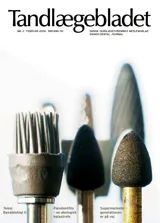Passiv immunisering mot karies
Det råder en dynamisk balans mellan den endogena (kroppsegna) mikrofloran och kroppens immunförsvar. Vår normala mikroflora spelar en viktig roll i upprätthållandet av hälsa och i skyddet mot sjukdomar. I munhålan och i resten av mag-tarmkanalen spelar mikroorganismers förmåga till vidhäftning (adhesion) en stor roll för utvecklingen av sjukdom. Adhesion styrs av adhesiner på ytan av bakterier och receptorer på tandpellickeln och möjliggör för bakterierna att fästa och kolonisera. I dag är ett av de allvarligaste hoten mot mänsklighetens existens bakteriers förmåga till resistensutveckling mot antibiotika. Ett angeläget och stort forskningsområde är därför möjligheten att hitta nya behandlingsmetoder, till exempel vaccin. Munhålan och munhålans sjukdomar är inget undantag.
Passive immunisation against caries: Adherence to mucosal surfaces has been shown to be of great importance in the pathogenesis of various infections in the gastro‑intestinal tract. In the oral cavity, adhesion to the tooth surface is important and plays a role in colonization of Streptococcus mutans ( S. mutans ). The oral pathogen S. mutans colonizes the hard tissue surfaces in the human oral cavity and is considered to be the principal etiologic agent of dental caries. S. mutans possesses a variety of virulence traits that enable it to establish itself in the oral cavity and initiate disease. Although the incidence of caries has been reduced due to prophylactic measures during the past de‑ cades, there are groups of patients for whom caries remains a major clinical problem. These include individuals with hyposalivation due to adverse effects of certain pharmaceutic‑ al products, systemic diseases such as Sjögren’s syndrome, and head and neck tumor patients receiving heavy local irradiation therapy. The effects of passive immunization against S. mutans , has previously been explored using topic‑ al oral administration of antibodies derived from both animals and plants. This includes studies with both monoclonal and polyclonal antibodies directed against either the surface adhesion SAI/II or the Glucosyltransferases. Still, the passive immunization is expensive and new traits need to be explored in order to find a safe and cost‑efficient therapy for oral diseases. Lactobacilli have previously been used to deliver vaccine components for active immunization in vivo. A novel method has been established where single‑chain Fv (scFv) are produced in situ for delivery of passive immunity. Oral administration of scFv‑expressing bacteria in desali‑ vated rats resulted in less S. mutans bacteria and lower development of dental caries. Lactobacilli are easily cultured and a high concentration of bacteria is achieved. This could be a future strategy for passive immunization in the oral cavity but today tolerance in the society for GMO (gene modified microorganisms) is low.


